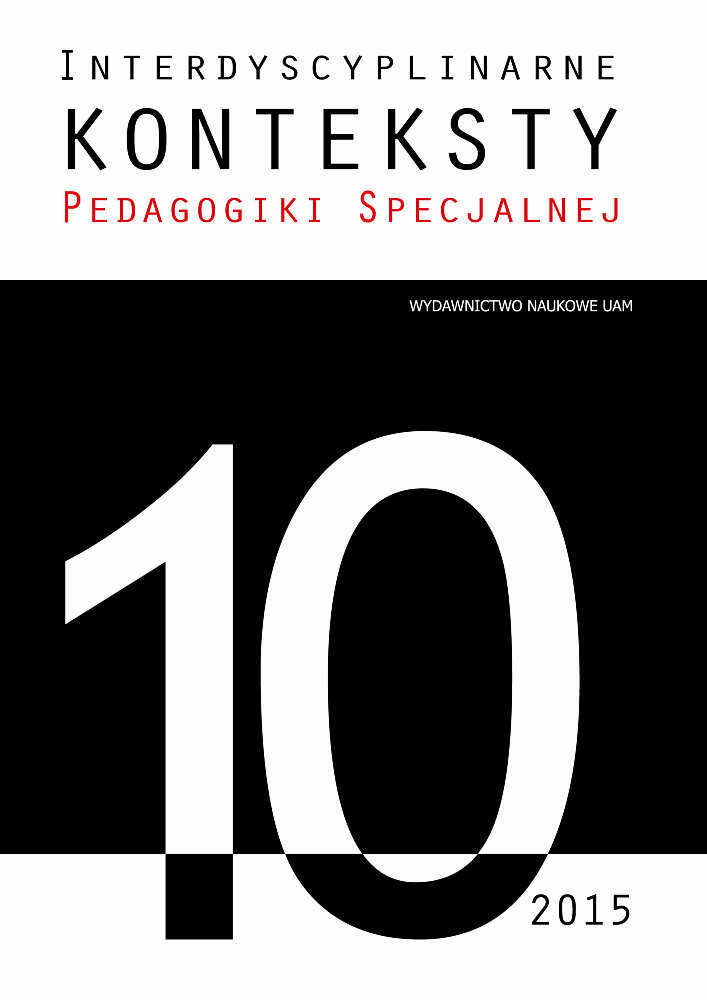Abstrakt
The Convention on the Rights of Persons with Disabilities (CRPD) is the eighth human rights convention enacted by the United Nations. Coming into force in 2008, it is the first international instrument specifically directed toward persons with disabilities. In its articulation of a clear and comprehensive mandate for the elimination of stig-ma and discrimination, it appeared to be a promising vehicle for the emancipation and empowerment of persons with disabilities. As of July 2015 there are 157 ratifica-tions, of which the great majority are developing countries. In this paper we exam-ine the CRPD within the context, and as part of, a larger and very significant global social-ideological orientation: the international movement for inclusive schooling. As inclusion is increasingly embraced around the world, it is important for educa-tors to understand how this major human rights convention is linked to and inter sects with the quest for inclusive schooling. Our analysis reveals that there are in-herent tensions and dialectical contradictions between the broad ideals of the inclusion movement and the more focused priorities of the CRPD. As a result, de-spite grand hopes and elaborate plans, progress of the CRPD has been disappoint-ing. The CRPD is not playing a significant role in inclusive policy making at any level. Very few nations have translated the principles into effective action. Indeed, few countries at present even have the capacity needed to ensure full implementa-tion of the treaty, and the international pattern documents a disconnect between emancipatory rhetoric and measurable outcomes. To date, it appears that the CRPD has done little to materially and educationally improve the prospects of those with disabilities.Bibliografia
Apanel D., Integrated education in contemporary Poland, JAASEP, http://www.naset.org/3779.0.html [31.10.2015].
Burns K., Gordon G., Analyzing the impact of disability legislation in Canada and the United States, „Journal of Disability Policy Studies” 2010, 20.
Canada ratifies UN Convention on the Rights of Persons with Disabilities, http://news. gc.ca/web/article-eng.do?m=/index&nid=517849 [31.10.2015].
Convention on the Rights of Persons with Disabilities and Optional Protocol, United Na-tions, New York 2006.
Education’s missing millions: Including disabled children in education through EFA FTI processes and national sector plans. World Vision, Milton 2007.
Encyclopedia of special education, red. C.E. Reynolds, Vannest, K., & Fletcher- Jantzen, E. Wiley, New York 2013.
Firkowska-Mankiewicz A., Incusive education: Task for today’s Polish schools, [w:] ABCD… edukacji włączajacej. Google translation [data dostępu: 22.04.2015].
Gil M., From segregation to equalization: The Polish perspective on educating children with intellectual disabilities, „Journal of Contemporary Issues in Education”, 2007, 2.
Gilham, C., Williamson W., Inclusion’s confusion in Alberta, „International Journal of Inclusive Education” 2014, 18.
School education in the year 2010/2011, Główny Urząd Statystyczny, Warszawa 2012.
Equal right, equal opportunity: Inclusive education for children with disabilities, Handicap International, London 2013.
Better education for all when we’re all included too: People with an intellectual disability and their families speak out on inclusive education. A global report on Education for All, disability, and inclusion, Inclusion International, London 2009.
Kauffman J.M., Badar J., Instruction, not inclusion, should be the central issue in special education: An alternative view from the USA, „Journal of International Special Needs Education” 2014, 17.
Lynch J., Senate unlikely to reconsider UN disability treaty, http://www.disability scoop.com/2014/11/24/senate-unlikely-treaty [24.11.2014]
Lord J.E., Stein M.A., United States ratification of the Convention on the Rights of Persons with Disabilities: Would it make a difference?. [w:] Advancing the rights of persons with disabilities: A US-Iran dialogue on law, policy and advocacy, red. A. Moore, S. Kornblet, Blue Law International, New York 2011.
Mazurek K., Winzer, M. Intersections of Education for All and the Convention on the Rights of Persons with Disabilities: Explaining the conflicting international cadences of inclusive schooling. Paper presented at the International Sympo-sium on Educational innovations around the world, Seattle June 30-July 2. 2015,
Meijer J.W., Special needs education in Europe: Inclusive policies and practices, http://www.inklusion-online.net/index.php/inklusion-online/article/view/ 136/136-Zugriff [1.02.2010]
Millennium Development Goals report, United Nations, New York 2010.
Realizing the Millennium Development Goals for persons withdisabilities towards 2015 and beyond, United Nations, Res/65/186, New York 2011.
Miles S., Singal N., The Education for All and inclusive education debate: Conflict, contra-diction or opportunity?, „International Journal of Inclusive Education” 2010, 14.
Opretti K., Belalcazar C., Trends in inclusive education at regional and international levels: Issues and challenges, IBE, Geneva 2008.
Picard A., It’s past time for our own Disabilities Act. „Globe and Mail” 2015, August 11.
Porter G. Are we star gazing? Can Canadian schools really be equitable and inclusive? http://www.cae-ace.ca/blog/gordon-porter/2011/1/2/3/are-we-star-gazing-can-canadian-schools-really-be-equitable-and-inclusive [29.05.2015].
Powell J., Comparative and international perspectives on special education, [w:] Sage handbook of special education, Sage, London 2014.
Reed G., Canada’s failing grade on disability rights, „Globe and Mail” 2013, August 2.
Report of the Blue Ribbon Panel on Inclusive Education in Alberta Schools, ATA, Edmon-ton, www.teachersab.ca [31.10.2015].
Starczewska A., Hodkinson A., Adams, G., Special education in Poland. [w:] Encyc-lopedia of special education, red. C.E. Reynolds, Vannest, K., & Fletcher- Jantzen, E. Wiley, New York 2013.
Stein M., Lord J., Future prospects for the United Nations Convention on the Rights of Persons with Disabilities. www.msu.act.zw…/13172103542-20-09 [31.10.2015].
Salamanca Statement and Framework for Action on Special Needs Education, United Nations Educational Scientific and Cultural Organization (UNESCO), New York 1994.
Wapiennik E., ANED country report on equality in educational and training opportunities for young disabled people, Academic Network of European Disability Experts, Po-land 2011.
Winzer M. & Mazurek K., The Convention on the Rights of Persons with Disabilities: Notes on genealogy and prospects, “International Journal of Special Needs Educa-tion” 2014, 17.
Winzer M., Mazurek K., The Convention on the Rights of Persons with Disabilities, [w:] Reconstructing disability to reimagine education, red. M. Hughes & E. Talbott Handbook of research on diversity in special education. John Wiley (in press), New York 2016.
